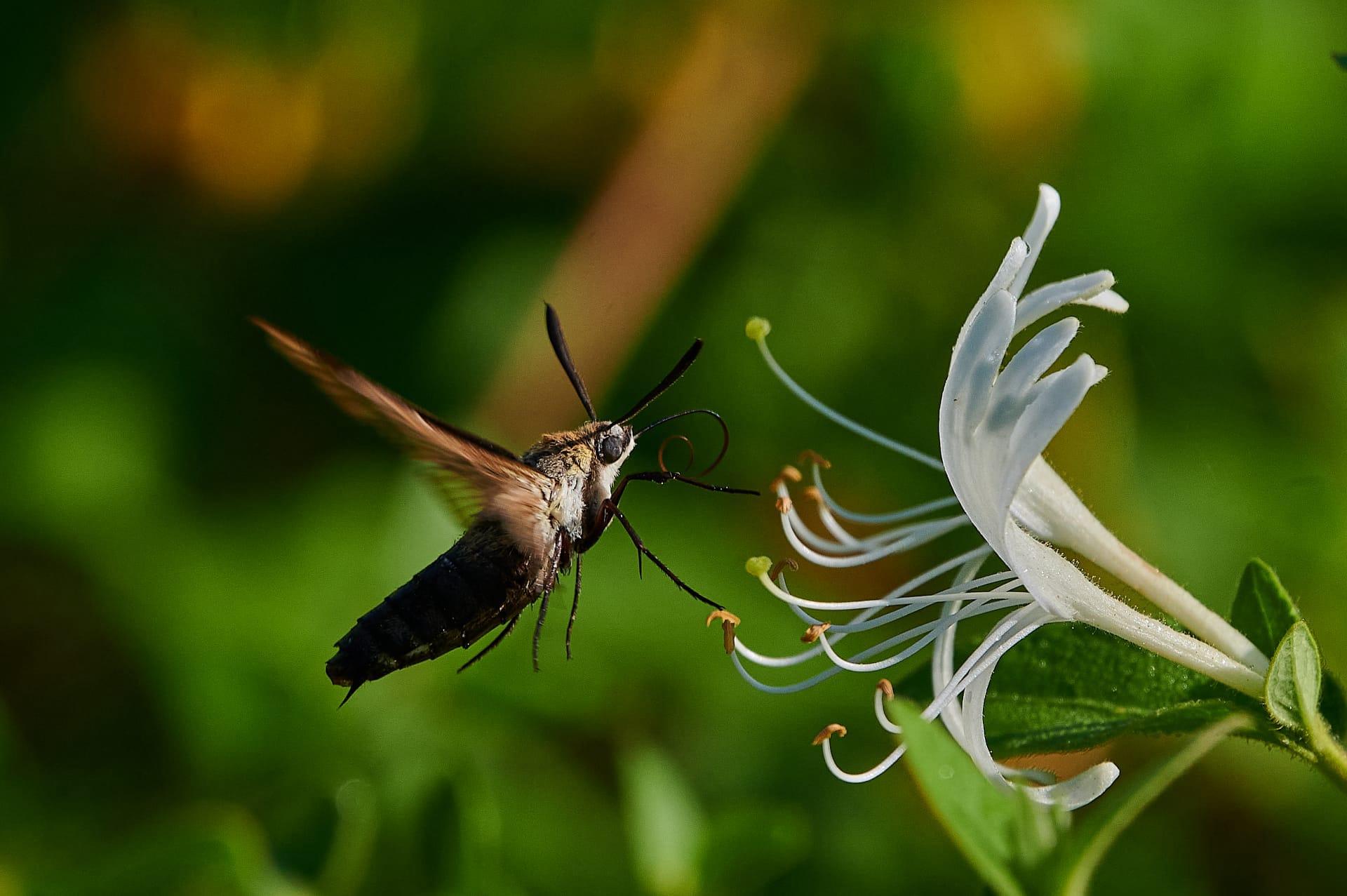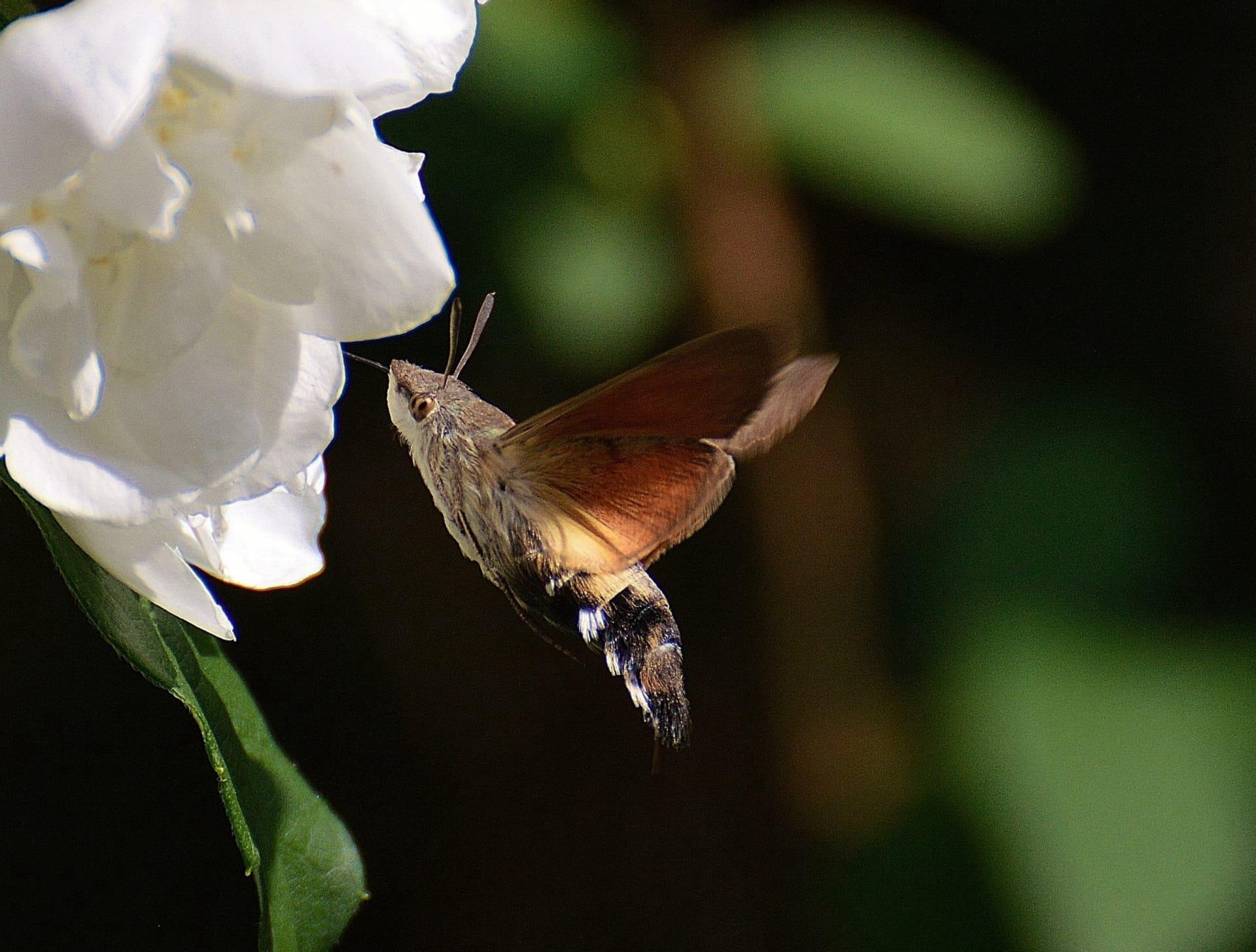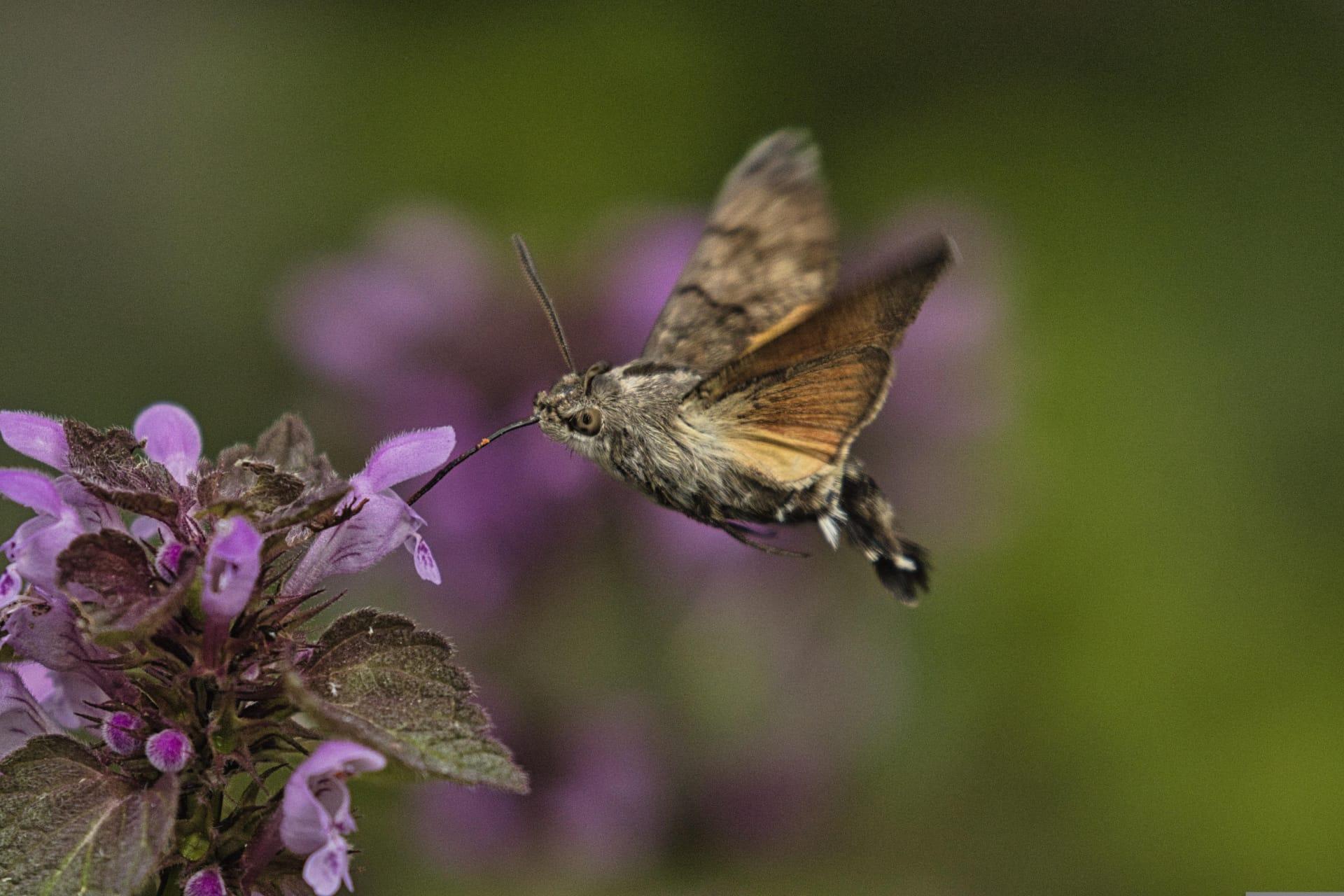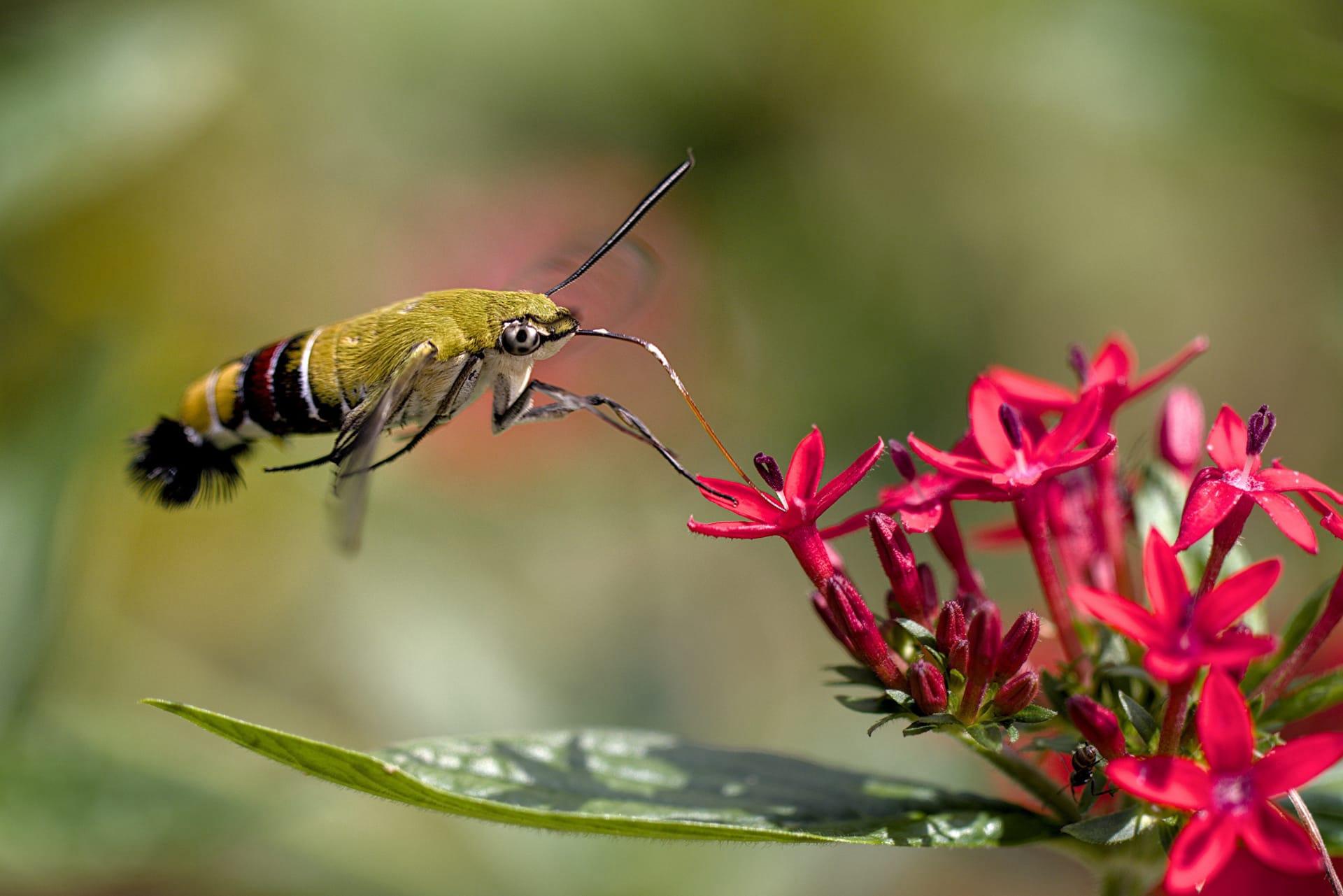Hummingbird Moth Characteristics
- Home /
- Mini Encyclopedia /
- Animal /
- Hummingbird Moth Characteristics
1
The Hummingbird Moth, a fascinating creature of the insect world, exhibits an array of remarkable physical characteristics. Its body size typically ranges between 1.2 to 2 inches in length, making it one of the larger moth species. The wingspan extends approximately 2 to 2.8 inches, providing the necessary support for their agile flight. One of the most striking features of the Hummingbird Moth is its coloration, often a blend of green, brown, and cream hues, which aids in camouflage among foliage. These moths have a relatively brief lifespan, living only about 5 to 7 months. During this period, they undergo a complete metamorphosis, evolving from eggs to larvae, then to pupae, and finally emerging as adults.
One of the most unique organs of the Hummingbird Moth is its proboscis. This long, straw-like tongue, which can be as long as the moth's body, is coiled beneath the head when not in use. During feeding, it unfurls to access nectar deep within flowers. This specialized organ allows the moth to hover in front of a flower, much like a hummingbird, while it sips nectar. The proboscis' remarkable design and functionality not only facilitate efficient feeding but also play a crucial role in the pollination of the flowers it visits, making the Hummingbird Moth an important player in various ecosystems.

2
Question: Why is the Hummingbird Moth often mistaken for a hummingbird?
Answer: The Hummingbird Moth is frequently mistaken for a hummingbird due to its similar size and behavior. With a wingspan of about 2 to 2.8 inches and the ability to hover in mid-air, it closely resembles these tiny birds. The moth's rapid wing flapping, which can reach up to 70 beats per second, produces a humming sound akin to that of a hummingbird. Additionally, the way the Hummingbird Moth feeds, hovering in front of flowers and using its long proboscis to extract nectar, further adds to the confusion. Its colorful body, mimicking the iridescence of a hummingbird's feathers, also contributes to this frequent case of mistaken identity.

3
The Hummingbird Moth exhibits distinct movement characteristics, chief among them being its ability to hover in mid-air. This skill is facilitated by their wing structure and rapid wingbeat, enabling them to move not only forwards and backwards but also vertically and laterally with remarkable precision. They are most active during daylight and at dusk, showcasing their agility as they navigate through gardens and meadows.
When it comes to feeding, the Hummingbird Moth has adapted to a diet primarily consisting of nectar. They are especially attracted to brightly colored, fragrant flowers like honeysuckle, violets, and phlox. Their long proboscis is perfectly adapted for extracting nectar from deep within these flowers. This feeding behavior not only nourishes the moths but also assists in the pollination of the plants they visit, playing a vital role in the health of their ecosystems.

4
The Hummingbird Moth thrives in a variety of environments, ranging from gardens and meadows to forest edges and grasslands. They prefer habitats with abundant flowering plants, which provide essential nectar. These moths are commonly found in North America, Europe, and Asia, adapting well to temperate and subtropical climates.
Reproduction and propagation are key aspects of the Hummingbird Moth's lifecycle. Females lay their eggs on the underside of leaves, particularly favoring plants that will later serve as food for the larvae. Upon hatching, the larvae, or caterpillars, feed voraciously on these host plants. After several stages of growth, they form a cocoon in which they undergo metamorphosis. This transformation period is crucial, leading to the emergence of the adult moth, ready to continue the cycle of life.

5
Book: "The Secret Life of Moths" by Dr. Hannah Reynolds, published in the United States in 2018, offers an in-depth exploration of various moth species, including the Hummingbird Moth. Reynolds, an entomologist, delves into the moths' unique behaviors, life cycles, and their roles in ecosystems. The book is praised for its detailed yet accessible approach, making it a valuable resource for both enthusiasts and professionals.
Book: "Moths: Masters of Disguise" authored by British naturalist George Fielding, published in 2020, focuses on the adaptability and survival strategies of moths, including the Hummingbird Moth. Fielding's work highlights the evolutionary marvels and ecological significance of these insects. The book is richly illustrated, providing readers with a visual feast that complements the informative and engaging text.